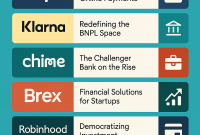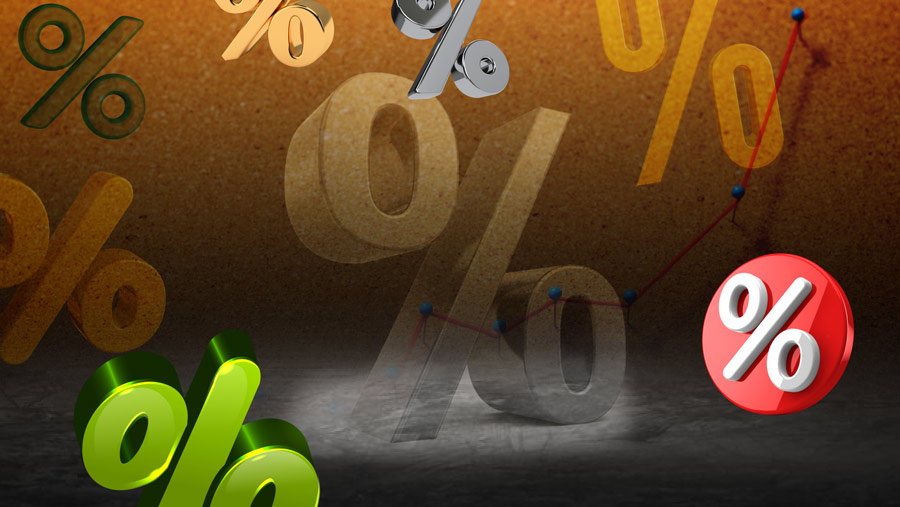Top 10 Fintech Trends Shaping the Future of Finance in 2025
Introduction
The financial world is evolving rapidly, and fintech—short for financial technology—is at the center of this transformation. As we look ahead, the top 10 fintech trends shaping the future of finance in 2025 are not just about fancy apps or digital wallets. They represent a massive structural shift in how individuals and businesses interact with money.
What Is Fintech?
Fintech encompasses any technology that enhances or automates financial services. From mobile banking apps and robo-advisors to blockchain networks and digital lending platforms, fintech is disrupting the entire financial value chain.
Why Fintech Trends Matter in 2025
Understanding fintech trends helps both consumers and businesses adapt to a financial world that’s becoming increasingly digitized, decentralized, and data-driven. With the rise of AI, blockchain, and real-time payments, knowing which fintech trends are shaping the future of finance in 2025 is essential to staying competitive.
1. AI-Driven Financial Services
Artificial Intelligence is revolutionizing fintech by automating and enhancing services.
Personalized Banking Through AI
In 2025, consumers expect hyper-personalized financial experiences. AI algorithms can now analyze spending habits, income, and behavior patterns to offer tailored savings plans, credit options, and investment strategies. Long-tail keyword: “AI-powered banking personalization tools in 2025”
AI in Risk Assessment and Fraud Detection
AI models are also critical in reducing fraud. Machine learning detects anomalies in real-time, alerting users or freezing suspicious activity. Expect more AI-powered fraud detection systems in mobile banking platforms.
2. Expansion of Embedded Finance
What Is Embedded Finance?
Embedded finance integrates financial services into non-financial platforms. Think of paying for groceries via a ride-share app or applying for insurance while booking a flight. Long-tail keyword: “embedded finance trends for non-fintech companies”
Use Cases Across Industries
Retailers, SaaS platforms, and even logistics companies now offer financing, payments, and insurance options through APIs. Embedded finance is blurring the line between tech companies and financial institutions.
3. Decentralized Finance (DeFi) Growth
DeFi is no longer just a crypto experiment—it’s reshaping core financial services.
DeFi Applications Beyond Crypto
Beyond cryptocurrency, DeFi protocols now offer lending, borrowing, and yield farming—all without intermediaries. Long-tail keyword: “top decentralized finance platforms beyond crypto”
Regulatory Challenges for DeFi
As DeFi becomes mainstream, regulators are trying to catch up. Expect a rise in DeFi compliance frameworks, especially in Europe and the U.S.
4. Rise of Green Fintech and ESG Integration
Sustainability is a fintech priority in 2025.
Sustainable Finance Solutions
Consumers are seeking financial tools that align with ethical and environmental values. Green fintech enables carbon footprint tracking, impact investing, and ESG-based lending. Long-tail keyword: “green fintech platforms for sustainable investing”
ESG Scoring Through Fintech
Platforms now assess ESG risk profiles for companies and help investors align their portfolios accordingly, combining fintech analytics with ethical investing goals.
5. Enhanced Cybersecurity in Digital Finance
Digital threats are rising alongside digital finance.
Biometric Authentication Trends
Fingerprint scanning, facial recognition, and even voice ID are replacing passwords. In 2025, biometric authentication in fintech apps is standard practice.
AI in Cyber Defense
Fintech companies use AI to detect and respond to cyberattacks in milliseconds. Long-tail keyword: “AI-powered cybersecurity tools in fintech applications”
6. Buy Now Pay Later (BNPL) Evolution
BNPL is changing how consumers finance their lives.
BNPL Regulation and Consumer Behavior
With popularity comes scrutiny. Governments are now regulating BNPL to avoid over-indebtedness and ensure transparent lending practices. Long-tail keyword: “BNPL regulation trends in 2025”
BNPL Integration in E-commerce
BNPL options are now default at checkout across major e-commerce sites. Expect innovations in flexible installment plans and interest-free periods.
7. Growth of Neobanks and Digital-Only Banks
Neobanks continue to outperform traditional institutions.
Global Neobank Expansion
Neobanks like Revolut, N26, and Chime are expanding rapidly across continents. These digital-first banks offer seamless onboarding, low fees, and innovative services.
What Sets Digital-Only Banks Apart
Digital-only banks leverage data analytics, mobile-first UX, and community-building to engage younger audiences. Long-tail keyword: “best digital-only banks for Gen Z in 2025”
8. Open Banking and API Economy
Data sharing is reshaping financial services.
PSD2 and Consumer Data Control
In Europe, PSD2 regulations give users control over their financial data. In 2025, we see global expansion of open banking practices. Long-tail keyword: “open banking implementation under PSD2 in 2025”
API-Driven Innovation in Fintech
Open APIs allow third parties to build new services on top of banking infrastructure—spurring rapid innovation in budgeting apps, credit analytics, and investment dashboards.
9. Cross-Border Payments with Blockchain
International payments are becoming faster and cheaper.
Crypto for Remittances
Blockchain enables near-instant cross-border transactions with minimal fees. Long-tail keyword: “blockchain remittance solutions for low-income countries”
Real-Time Settlements and Reduced Fees
With protocols like Ripple and Stellar, businesses and individuals can avoid banking delays and save on transaction fees.
10. Hyper-Personalized User Experience (UX)
UX isn’t just about design—it’s a fintech differentiator.
UX as a Competitive Advantage
Fintech apps with superior user flows, clear navigation, and visualized data insights dominate app store rankings. Long-tail keyword: “fintech UX design trends for mobile apps”
Fintech App Design Best Practices
In 2025, expect minimalist interfaces, dark modes, voice assistants, and real-time financial nudges for smarter spending.
The Future Outlook of Fintech Beyond 2025
Challenges to Watch
-
Regulatory uncertainty
-
Cybersecurity threats
-
Data privacy concerns
Opportunities for Innovators
-
Financial inclusion for unbanked populations
-
AI-driven wealth management
-
Decentralized ID and KYC systems
Conclusion
Recap of Key Fintech Trends
The top 10 fintech trends shaping the future of finance in 2025 reflect a world where finance is digital, intelligent, and customer-centric. From AI and blockchain to ESG and embedded finance, the fintech revolution is far from over.
Embracing the Future of Financial Innovation
Whether you’re a fintech startup, a financial advisor, or just a curious consumer, now is the time to adapt. Understanding these trends helps you make smarter decisions, serve your customers better, and embrace the future of money with confidence.
Frequently Asked Questions (FAQ)
1. What are the top fintech trends in 2025?
The top fintech trends in 2025 include AI-driven financial services, embedded finance, decentralized finance (DeFi), green fintech, biometric cybersecurity, BNPL evolution, neobank growth, open banking, blockchain-powered cross-border payments, and hyper-personalized UX in fintech apps.
2. How is AI shaping the future of finance?
AI is revolutionizing the financial industry by enabling personalized banking experiences, improving risk assessment models, detecting fraud in real time, and automating customer service through chatbots and virtual assistants.
3. What is embedded finance, and why is it important?
Embedded finance integrates financial services—like payments, lending, or insurance—directly into non-financial platforms. It enhances user experience by offering seamless financial transactions within everyday digital experiences like shopping or booking travel.
4. Will DeFi replace traditional banking systems?
While DeFi offers innovative alternatives to centralized banking—such as peer-to-peer lending, decentralized exchanges, and smart contract insurance—it’s unlikely to completely replace traditional banks. However, it will coexist and push banks to innovate faster.
5. How do fintech companies promote sustainable finance?
Green fintech companies promote sustainability by offering tools for carbon footprint tracking, ESG-focused investment portfolios, and lending solutions that prioritize environmentally responsible practices.
6. What is the future of Buy Now Pay Later (BNPL)?
In 2025, BNPL is becoming more regulated and more widely adopted, especially in e-commerce. Expect improved transparency, credit checks, and integration with personal finance apps to help consumers manage debt responsibly.
7. Are neobanks safe to use in 2025?
Yes, most neobanks operate under regulated financial licenses and use advanced encryption, biometric security, and FDIC-equivalent protections. However, users should verify that their neobank is licensed in their country.
8. What is open banking and how does it benefit consumers?
Open banking allows consumers to securely share financial data with third-party providers through APIs. This leads to better financial product recommendations, automated budgeting tools, and increased competition among banks.
9. How does blockchain improve cross-border payments?
Blockchain enables real-time, low-fee, and transparent cross-border transactions. It reduces the need for intermediaries, cuts processing costs, and increases the speed of international payments—especially in underbanked regions.
10. Why is UX so important in fintech apps?
A great user experience (UX) ensures users can easily navigate financial tools, understand their money, and take action. In fintech, UX design directly influences trust, engagement, and customer retention.







